Visit: 28th/29th November 2016
With exams over for the autumn term I travelled with a group of fellow Masters students up to Edinburgh for a trip to a city I had never before been to. In fact it was to be my first time setting foot in Scotland, which seems odd given how close it is. The first of our group to head up north, Neill, Gokul and I met up at Tottenham Hale tube station before taking the train to Stansted airport and an early Ryanair flight to Edinburgh. Gokul was excited to try the ultra low cost carrier out for the first time, as he’s investing in an Indian airline that imitates a lot of Ryanair’s innovations.
My overall impression of the Edinburgh was mild surprise at how nice it was. I expected it to be pretty impressive, but it also seemed like somewhere that would be nice to live in. It is split into the Old Town, which rises up on a promontory the length of the Royal Mile, ending at the castle, and the New Town, which is only as new as the skyscape of Bath, for example (which is to say mostly Georgian).
The two halves are divided by a small valley, if that is the word, which looks like it should hold a river but actually holds a railway line and the city’s main station, Waverley (named after a series of novels by Sir Walter Scott, of whom the city is proud).
Our trip organiser, Kat, had booked us apartments in the heart of Old Town, right on the Royal Mile. After checking in we first visited the cathedral, named after St Giles. It is smaller than I expected from such an important city, but that probably stems from the fact it was built in an area that was already bustling, in the heart of Auld Reekie (as it was nicknamed for its smell). We stopped off beside a statue of Adam Smith, the father of modern economics and a face you can see on the £20 note (although ironically not on the Scottish version).
We wandered over to New Town to get a few drinks in some heritage pubs. Needing hard currency, and interested to get some Scottish bank notes for myself and compare them to those of London and Gibraltar, we popped into a branch of RBS.
Grand hardly describes this bank, built as it is in what used to be one of the founders’ mansion. This isn’t some sort of high net worth only branch like Coutts, but is open for anyone to use and has ATMs inside and a branch manager wearing a kilt!
Before long the others arrived and we went for dinner and drinks. I had the local dish of haggis, neaps and tatties, which wasn’t bad at all.
The next morning I went with Gokul and Neill to see the Forth Bridge, which gets its own post as it too is a World Heritage Site.
On our return we ran into the Latin American contingent on their way to walk up Arthur’s Seat, the 820 foot hill that overlooks the city. They told us it was going to be a 29 minute walk from the Old Town, but that was quite an underestimate!
That evening seven of us enjoyed a slap-up curry, during which we ordered and survived a phal (supposedly spicier than a vindaloo, but it wasn’t that bad at all in this case). We then had a long night out in both New and Old Towns until 4 in the morning.
I left Edinburgh at 9am the next (same) day for Durham. I think that part of its charm comes from the wealth created by the many finance jobs (modern insurance and pensions were invented in Edinburgh, and it is a banking and fund management hub, second only to London in Britain). But also the uniformity of the architectural style is important, with all that imposing granite being used to great effect. I now see why it is on the itinerary of every tourist who comes to the UK, and long may it remain a member of our kingdom. That Scottish parliament building is a bit of a monstrosity though!
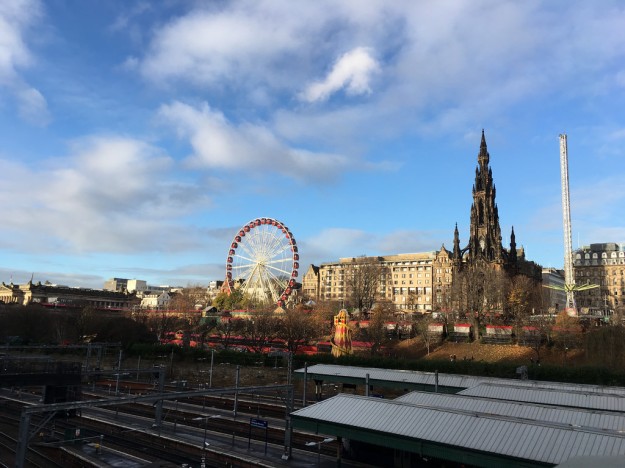


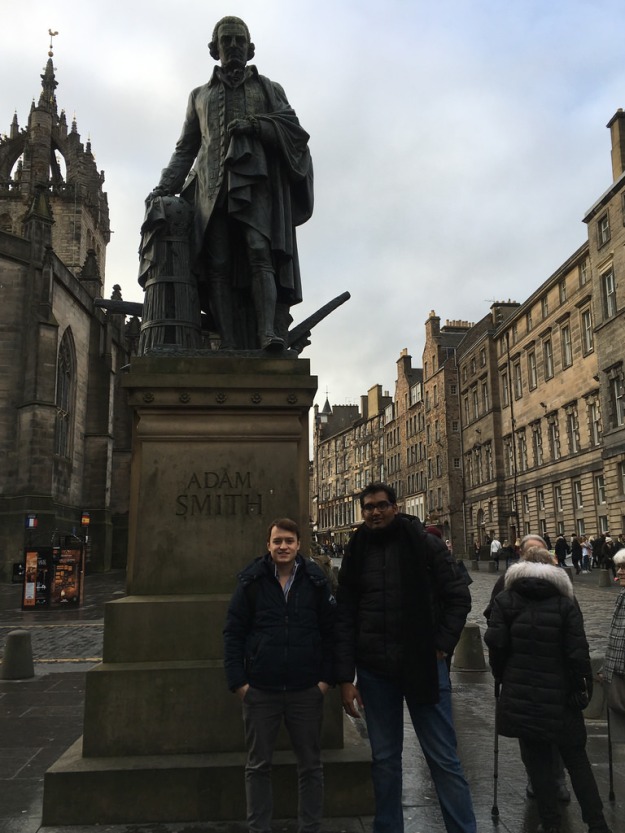
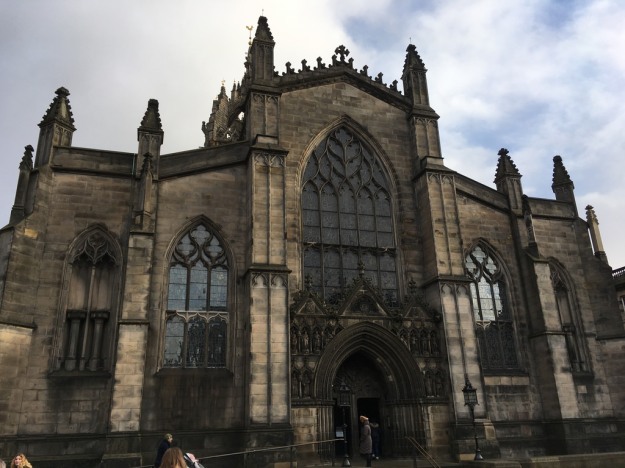
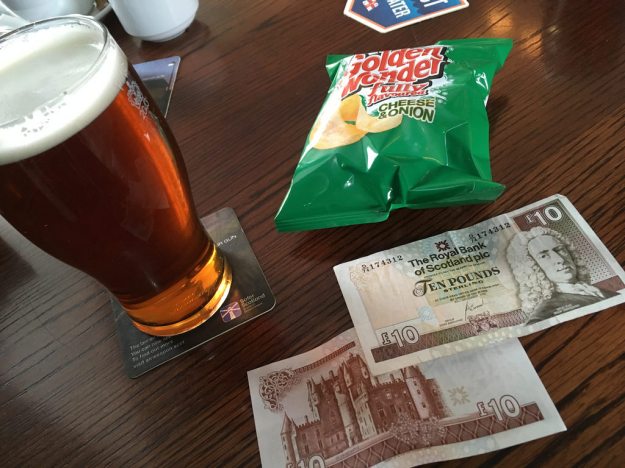
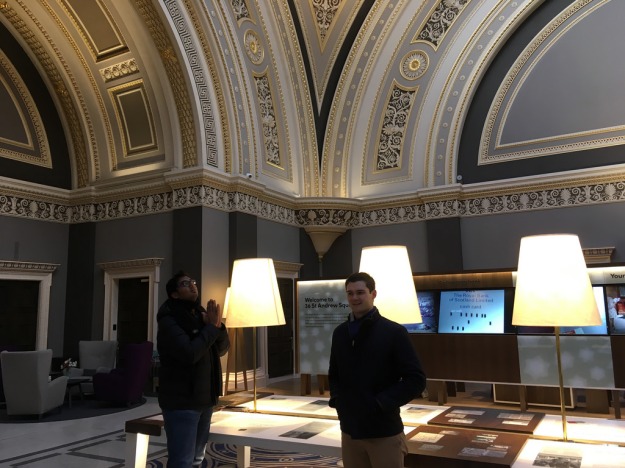
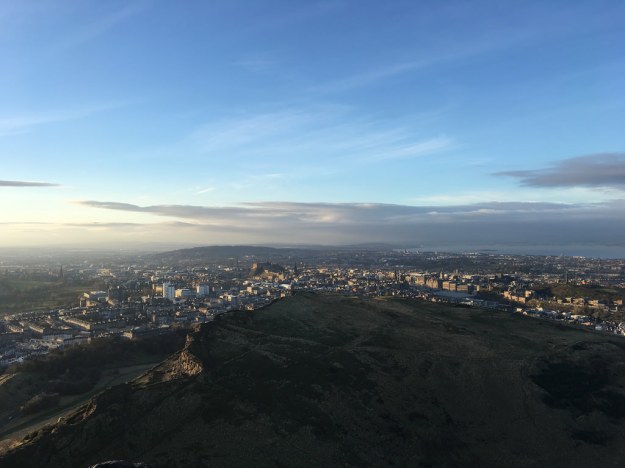
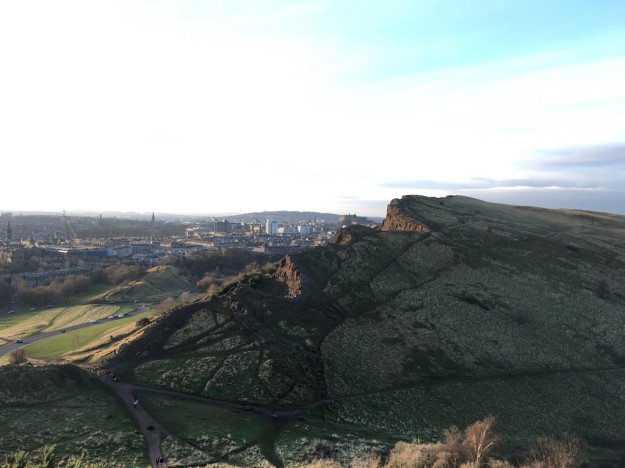
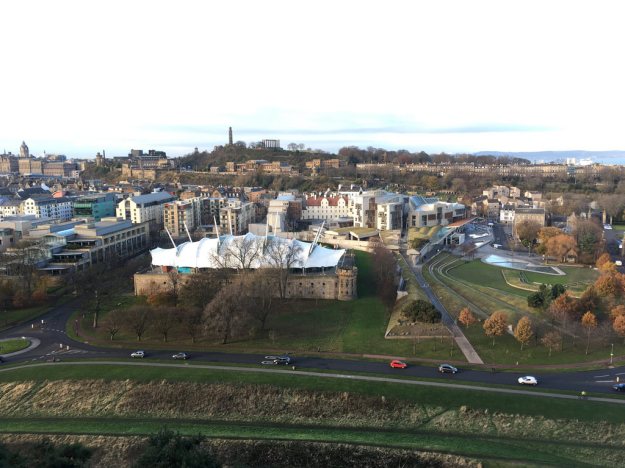
We only spent a short amount of time in the city, 2 days and that is not enough in our opinion. Have not tried haggis, but would do so the next time!
You must try it next time – surprisingly tasty!
Pingback: • The Forth Bridge | Tom's World Heritage Site travel blog
Pingback: • Durham Castle and Cathedral | Tom's World Heritage Site travel blog